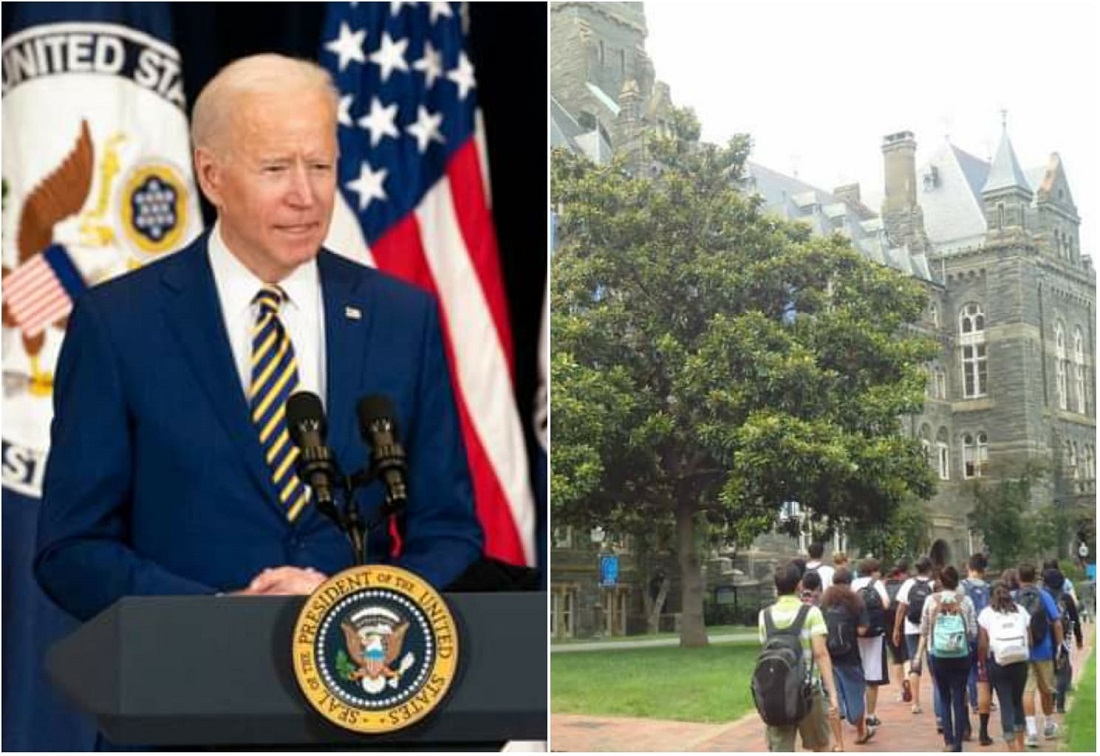 22 new fields of study opened to strengthen economy and technological competitiveness
22 new fields of study opened to strengthen economy and technological competitiveness
Indian and other international students, researchers, and experts in STEM fields will now have more opportunities to realize their American dream with the United States announcing several new actions to attract global talent.
The changes announced by the White House Friday, including addition of 22 new fields of study as qualifying subjects, amid a slowdown would benefit students (F-1), exchange visitors (J-1) and people with extraordinary ability (O-1A) in the fields of science, arts, education, business, or athletics.
The new actions were designed to attract “international STEM scholars, students, researchers, and experts to contribute to innovation and job creation efforts across America,” it said Jan 21.
Read: 25 Indian students to get Quad STEM Fellowship (September 27, 2021)
“The Biden-Harris Administration believes that one of America’s greatest strengths is our ability to attract global talent to strengthen our economy and technological competitiveness, and benefit working people and communities all across the country,” the White House said.
“In the fields of science, technology, engineering, and mathematics (STEM) – fields that are critical to the prosperity, security, and health of our Nation – our history is filled with examples of how America’s ability to attract global talent has spurred path-breaking innovation,” it noted.
“This innovation has led to the creation of new jobs, new industries, and new opportunities for Americans across the United States,” the White House stated.
“Our commitment as a nation to welcoming new talent has long provided America with a global competitive advantage, and we must continue to lead in this effort,” it added.
Shortly thereafter, the Departments of State and Homeland Security (DHS) announced new actions to “advance predictability and clarity for pathways for international STEM scholars, students, researchers, and experts to contribute to innovation and job creation efforts across America.”
The DHS added 22 new fields of study to the STEM Optional Practical Training (OPT) program to enhance the contributions of nonimmigrant students studying in the fields of science, technology, engineering, and mathematics (STEM), and support the growth of the US economy and innovation.
The added fields of study are primarily new multidisciplinary or emerging fields, and are critical in attracting talent to support US economic growth and technological competitiveness, the White House said.
“STEM innovation allows us to solve the complex challenges we face today and make a difference in how we secure and protect our country,” said Secretary Alejandro Mayorkas.
“Through STEM education and training opportunities, DHS is expanding the number and diversity of students who excel in STEM education and contribute to the US economy.”
The STEM OPT program permits F-1 students earning bachelor’s, master’s, or doctoral degrees in certain STEM fields to remain in the United States for up to 36 months to work in their field of study.
Adding 22 fields of study will ensure the US economy benefits from students earning degrees in the United States in competitive STEM fields, DHS said. Information on the new fields of study will be communicated to schools and students through a Federal Register notice.
The US Citizenship and Immigration Services (USCIS) is updating guidance to clarify how certain STEM graduates and entrepreneurs can use the national interest waiver for employment-based immigrant visa classification as an advanced degree professional noncitizen or noncitizen of exceptional ability.
Certain noncitizens with an advanced degree or exceptional ability can self-petition for employment-based immigrant visa classification, without testing the labor market and obtaining certification from the Department of Labor, if USCIS determines the waiver of the labor market test to be in the national interest, it said.
The updated guidance clarifies how to use the program, making it easier for noncitizens with needed skills, such as STEM graduates and entrepreneurs, to embark on a pathway to obtain lawful permanent resident status in the United States.
USCIS is also issuing a policy manual update related to O-1A nonimmigrant status for noncitizens of extraordinary ability in the fields of science, arts, education, business, or athletics.
This update explains how USCIS determines eligibility for O-1A petitioners and, for the first time, provides examples of evidence that might satisfy the criteria, including for individuals working in STEM fields.
The State Department’s Bureau of Educational and Cultural Affairs (ECA) announced an “Early Career STEM Research Initiative,” to facilitate non-immigrant BridgeUSA exchange visitors coming to the United States to engage in STEM research through research, training or educational exchange visitor programs with host organizations, including businesses.
ECA also announced new guidance to facilitate additional academic training for undergraduate and graduate students in STEM fields on the J-1 visa for periods of up to 36 months.
These actions will allow international STEM talent to continue to make meaningful contributions to America’s scholarly, research and development, and innovation communities, the White House said.
These announcements build on the Biden Administration’s efforts to remove barriers to legal immigration, such as under Executive Order 14012, Restoring Faith in Our Legal Immigration Systems and Strengthening Integration and Inclusion Efforts for New Americans, it added.
Read: US announces new actions to attract global STEM talent (January 21, 2022)
The 22 new fields of study announced by DHS are bioenergy, general forestry, forest resources production and management, human-centered technology design, cloud computing, anthrozoology, climate science, earth systems science, economics and computer science, environmental geosciences, geobiology, geography and environmental studies, mathematical economics, mathematics and atmospheric and oceanic science, general data science, general data analytics, business analytics, data visualization, financial analytics, other data analytics, industrial and organizational psychology, and social sciences, research methodology, and quantitative methods.



